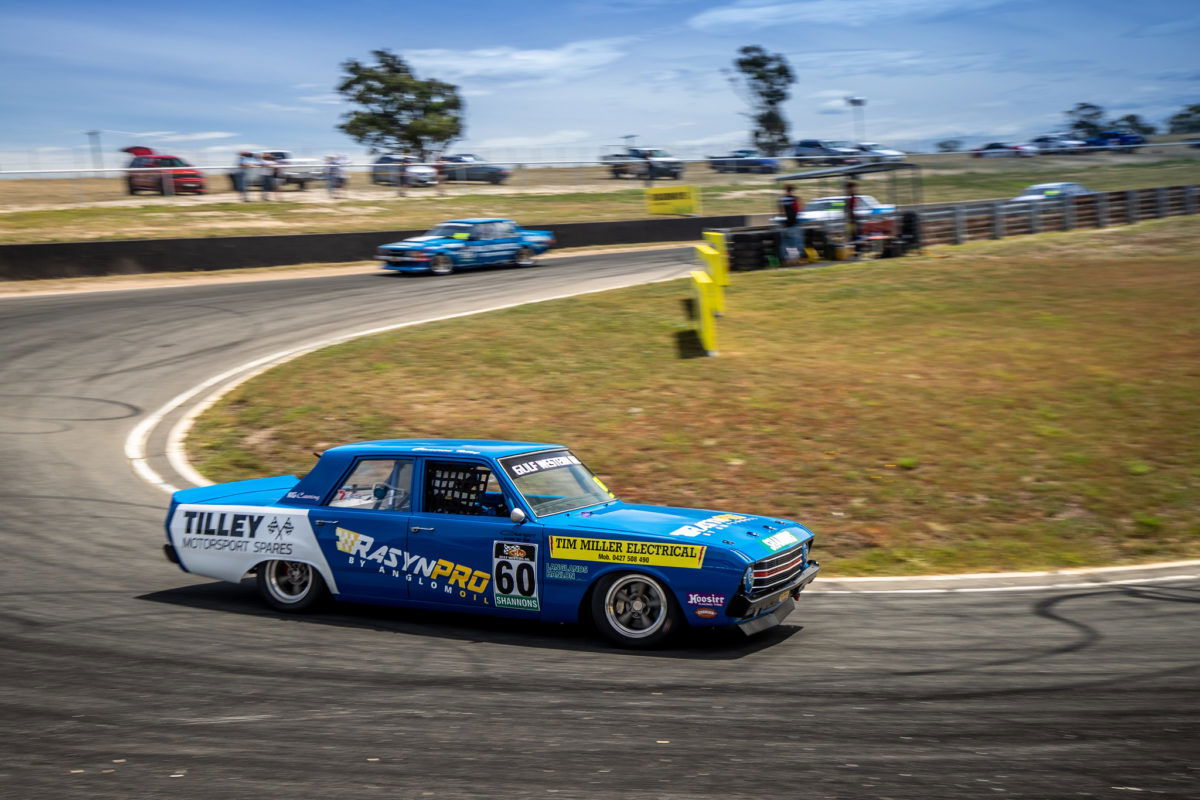

Gulf Western Oils Touring Car Masters management is in talks with competitors and the category’s owner about how it should look and feel going forward.
TCM, which began in 2007 as an evolution of Group N racing, has seen a steady flow of new cars into the series in recent years, raising the bar for design and performance.
With that, but not entirely because of it, there have been ructions behind the scenes about matters such as parity and the eligibility/suitability of certain vehicles.
TCM remains highly popular among fans, included being voted the most popular support category by Speedcafe.com readers last year.
However, some competitors have cited the above-mentioned concerns to Speedcafe.com as reasons for grid sizes in the high-teens becoming commonplace.
The current campaign is set to be the first under Australian Racing Group ownership, given only one round was completed in 2020.
Paul Taylor had already been installed as technical advisor in time for that round in Adelaide, before it was announced late last year that he would also become category manager, effective 2021.
Given he is new to the latter role, whereas predecessor Rowan Harman had been part of the category since the beginning, Taylor is seeking to understand what the key stakeholders want from TCM.
“The category has been enormously strong and successful as everybody understands,” he told Speedcafe.com.
“But, not unlike other categories, it’s got some issues that need to be sorted.
“Basically, I’m just working through a process to understand more about the category, what it is currently, and what it should be into the future, with the idea of putting a plan together to make sure it delivers what it should be into the future.”
TCM is arguably an outlier as far as Supercars’ regular or semi-regular support categories are concerned, in how wide the range of competing vehicles is.
For example, Super2 is a technical parity series just like the top tier, Carrera Cup is a one-make series, and GT World Challenge Australia functions to a global balance of performance regime.
TCM’s sporting regulations, on the other hand, list 17 eligible models of car for which years of manufacture collectively span the period 1963 to 1980.
They include Toranas, Falcons of various vintages, Commodores, Camaros, Mustangs, and Pacers, making for great mechanical and aerodynamic variety.
While the category operates to a Weights and RPM Register, which prescribes limits on those quantities for each car in a particular event, equalising performance is a difficult, if not impossible task.
Furthermore, there is also the very question of just how far the category should pursue equalisation, if at all, given the appeal of watching cars which are at least somewhat period correct.
Asked about whether or not TCM should be based on the idea of (technical) parity, Taylor responded, “That’s a very good question, which I don’t have the answer for yet.”
It is something, however, which he is seeking input on from competitors.

“It is what it is,” he added.
“It’s evolved to where it’s been enormously successful. Tony Hunter [founder and former owner] and Rowan Harman have done a fantastic job in the past of getting the category to where it is.
“I probably approach things a bit differently. I like to understand; I like to have a definition of what it is we’ve got, what it’s supposed to be; and I’m working on putting that together. I’m not even close to having that finalised.
“I’ve had meetings with all the car owners at each of the rounds so far this year, and we’ll continue to do that, to talk to them about where the category is, because ultimately, they’re the ones that have invested.
“We need to understand where they’re at, and then it’s like a lot of things; you’ve asked 20 competitors the same question, you’ll end up with 20 different answers.
“Someone like me needs to facilitate that, work out what I think the answer to that question is, and then put it back to the competitors and the owners, ARG and the category. They need to be comfortable with where we’re going.
“Then my plan is to come up with a definition of the category that does detail what it is.
“That makes it much easier in the future when you have a question come up as to ‘What should we do here? or ‘What should we do there?’
“It’s quite simple; you go back to the definition of the category and say, ‘Well, yes, that request is in line with the definition of the category; tick the box,’ ‘No, it’s not,’ [or] ‘Maybe we need to look at it further.’
“So, it’s very much trying to get answers to those questions, so it is clearly understood by everybody what the category is and what we would like it to be.”





















Discussion about this post